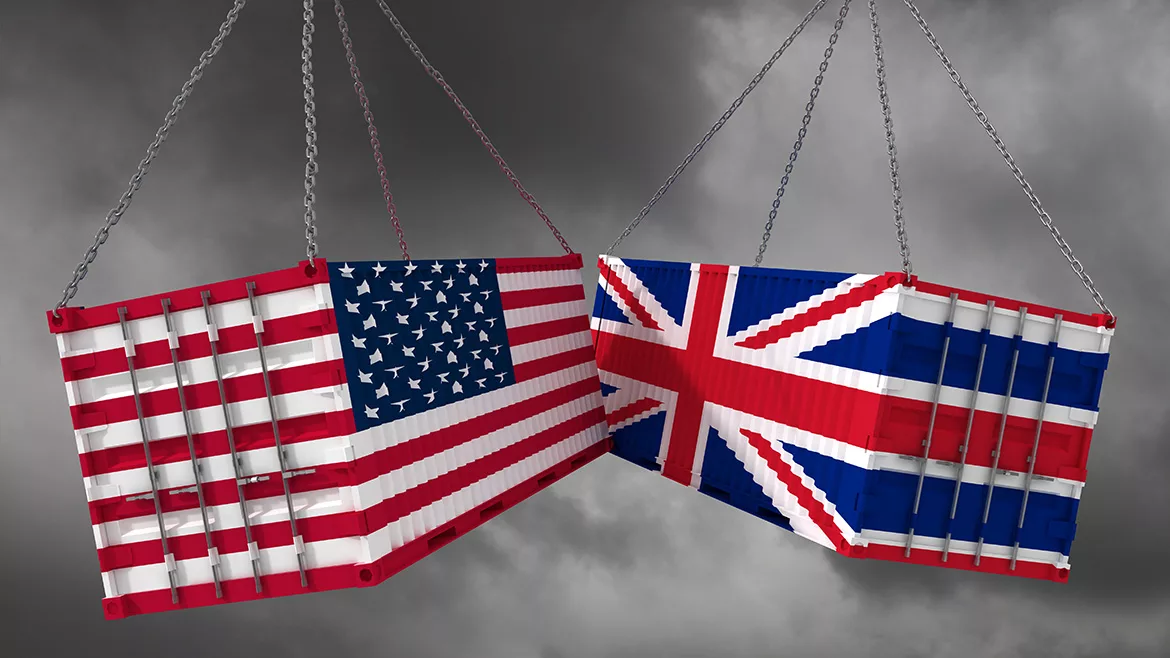Tariffs Reshape Coatings Supply Strategies

Credit: alexsl / iStock via Getty Images Plus
With sweeping trade tariffs now firmly in place across the United States, coatings companies are beginning to feel the pressure along the supply chain. The Trump administration’s tariff policies, first announced on April 2 and expanded over the following weeks, are reshaping sourcing, manufacturing and pricing strategies across the industry.
Where Tariffs Stand
As of early May, the United States has implemented a universal 10% tariff on all imports, effective April 5, under President Trump's directive to address trade imbalances. This baseline tariff was announced on April 2 and took effect shortly thereafter. Additionally, on April 9, tariffs on imports from China were significantly increased to 145%, prompting China to retaliate by imposing a 125% tariff on most U.S. exports. These measures have elevated the average effective U.S. tariff rate to approximately 27%, marking the highest level since 1903.
Industry Reaction: Sun Chemical Introduces Tariff Surcharge
One recent response within the coatings value chain came from Sun Chemical, which announced a tariff surcharge on its color materials products, including pigments produced domestically and those imported. In a May 5 press release, the company stated the surcharge is necessary to address rising costs tied to the current tariff regime.
“We acknowledge that this surcharge represents a significant cost increase,” said Brian Panczyk, President of the Color Materials Division at Sun Chemical. “As the tariff situation continues to evolve, we are committed to adjusting our approach fairly while pursuing supply chain options to mitigate the tariff impact.”
The surcharge amount and timing will vary by country and will be communicated directly to customers.
Broader Industry Implications
Though the coatings industry benefits from a significant level of domestic production, raw materials like pigments, solvents and specialty additives remain globally sourced. Equipment parts, packaging components and specialty intermediates are also affected by these tariffs, with ripple effects likely to appear in pricing, lead times and customer strategies throughout 2025.
U.S.–U.K. Trade Deal and Automotive Coatings Outlook
On May 8, President Trump and UK Prime Minister Keir Starmer announced a new U.S.-U.K. trade agreement, which includes reduced tariffs on up to 100,000 British vehicles annually—down from 27.5% to 10%. Additionally, U.S. tariffs on UK steel and aluminum will be eliminated, though the blanket 10% U.S. import tariff on other goods remains in effect.
This tariff reprieve could encourage greater transatlantic automotive trade, particularly if U.K.-based automakers ramp up exports to the United States. Should that occur, the coatings sector — especially suppliers of OEM automotive coatings, e-coat systems and refinishing solutions — may see a moderate uptick in demand tied to increased production or aftermarket refinishing of imported vehicles.
Looking Ahead
The paint and coatings industry will continue navigating tariff-related uncertainty in the months ahead. Whether through pricing adjustments, diversification of sourcing strategies or closer customer collaboration, companies are being forced to respond quickly to a volatile trade environment. Industry leaders are watching closely for future developments, including potential exemptions, sector-specific negotiations or further retaliatory measures, that may alter the current trajectory.
Looking for a reprint of this article?
From high-res PDFs to custom plaques, order your copy today!







